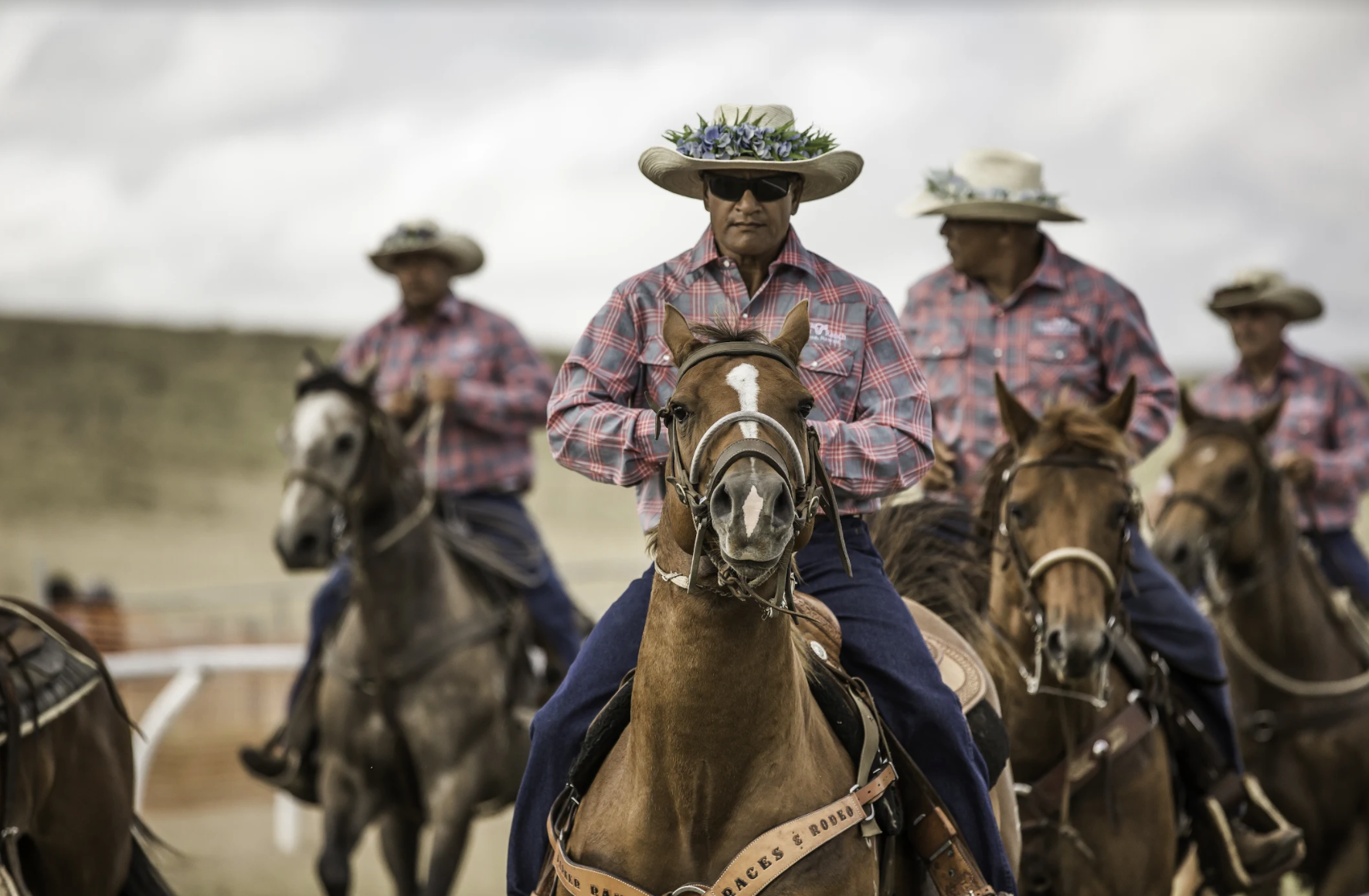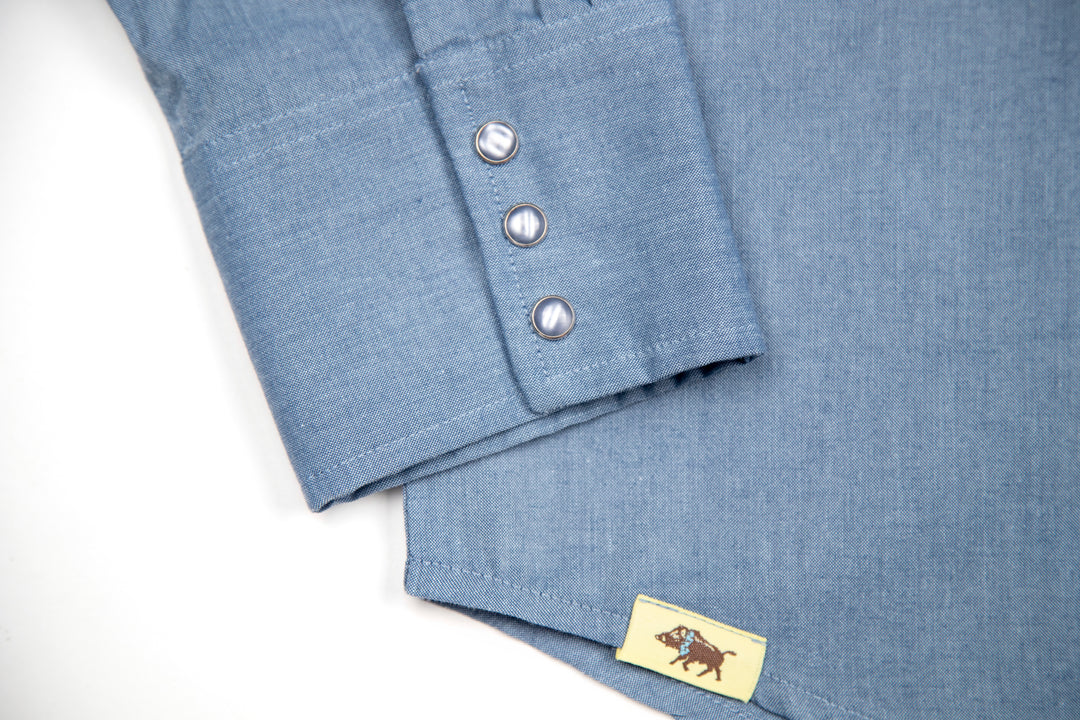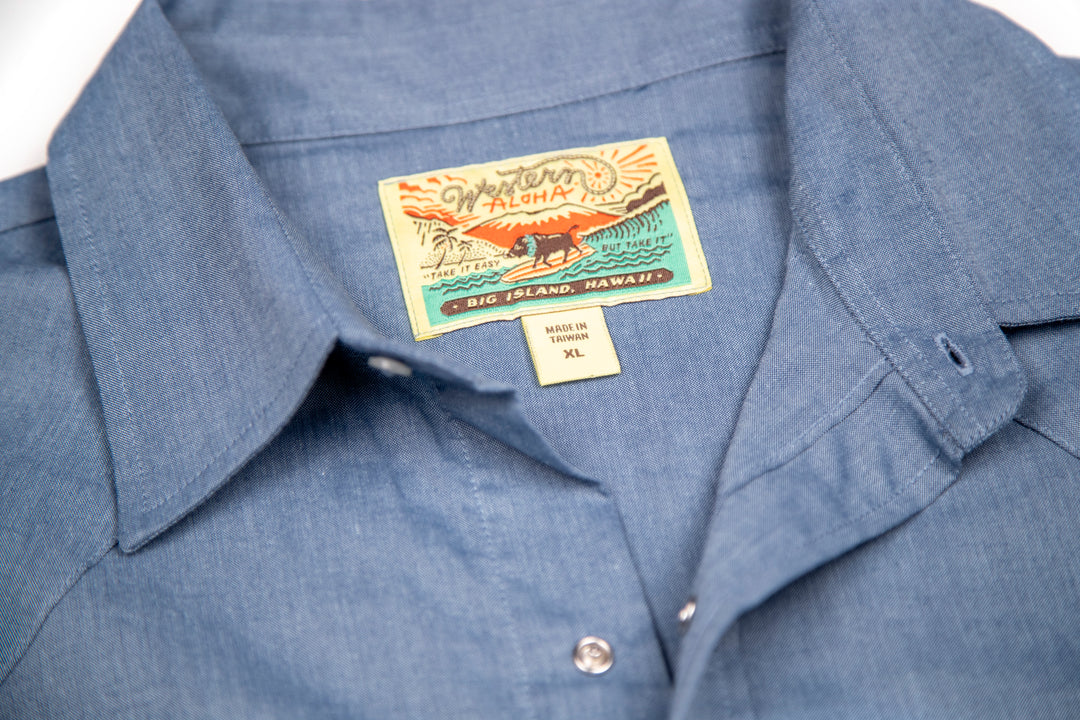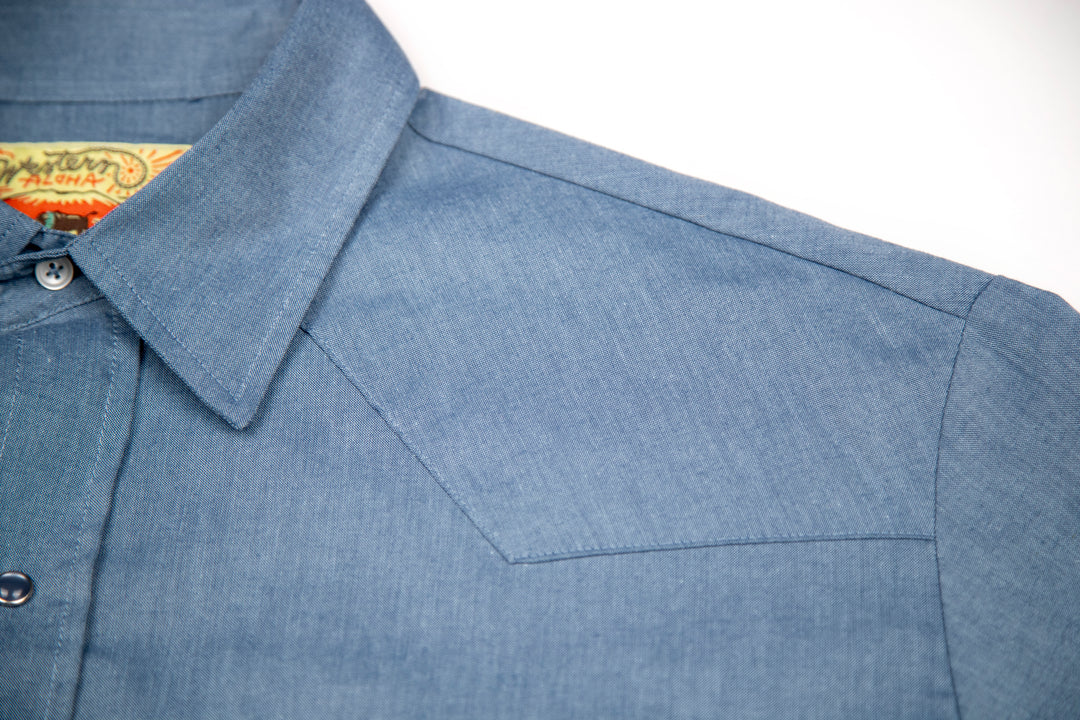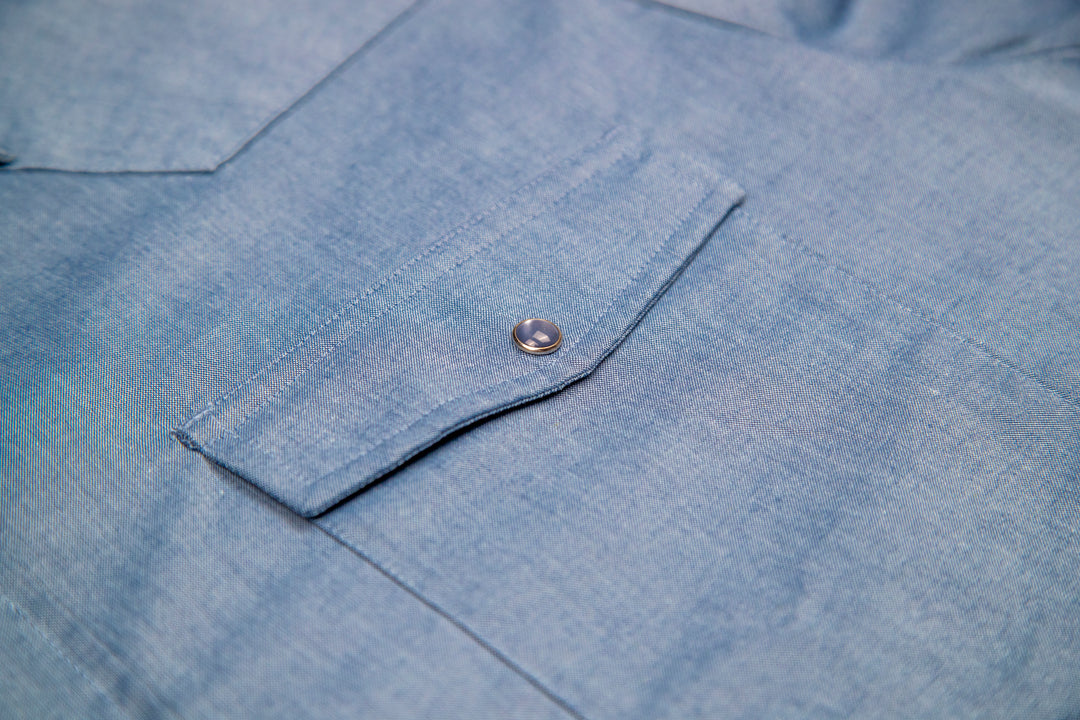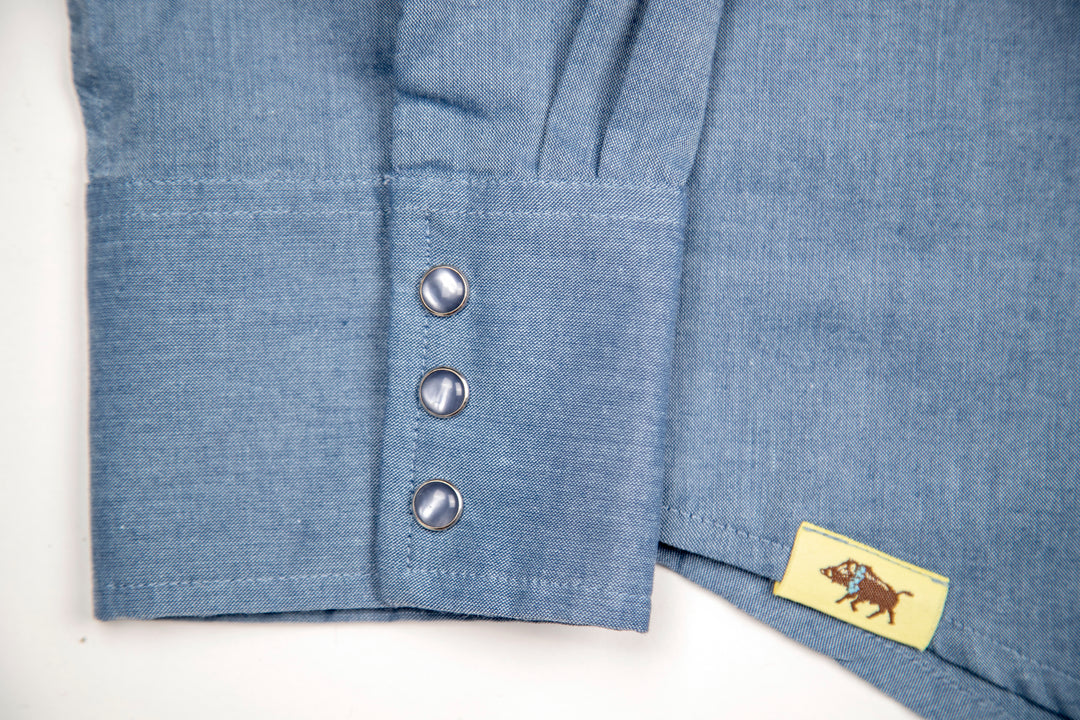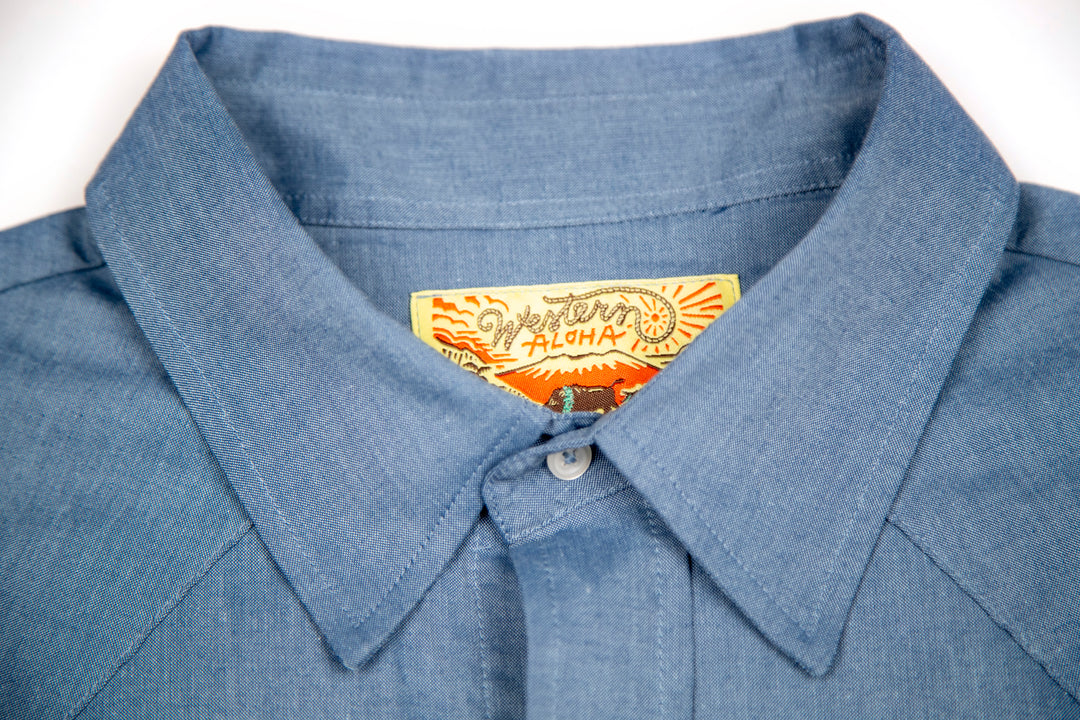The Western Aloha Shirt
I think our pictures here are some layout of a selection of our shirts with the first section, closeups of shirt elements in the second section, and closeups of the fabric in the third section.
Western Shirt + Aloha Prints = The Western Aloha Shirt
Our shirts combine the performance and style of western shirts with prints inspired by the spirit of Aloha. Western Aloha Shirts are designed to be lightweight, durable, versatile, functional, and comfortable. We use a special fabric blend that gets softer and more broken in as it is worn, until the shirt becomes the most comfortable and easy going shirt your closet.
Just follow the wear instructions: "Snap and Relax."
Western Shirt Construction
Our shirts are inspired by classic western shirts. Printed shirts are cut and sewn in El Paso, Texas by third-generation western shirt makers. With origins in traditional work wear, western shirts developed their own distinct style suitable for town or ranch. Although we mix things up a bit to create our own style, our Western Aloha Shirts have some or all of the following features:
- Snaps
- Tailored cut
- Shoulder yokes
- Pockets with flaps and bartacks
- No collar button or snap. We've also moved down the uppermost snap just a bit for added relaxation. We call this our "Cruise Snap."
- Long sleeves
- A sturdy collar, placket, and cuffs
Aloha Print Tradition
The Aloha shirt first came into existence sometime in the 1920s in Honolulu, although the identity of its first designer is obscured by the mists of time. One thing that seems clear enough is that some of the first Aloha shirts were made out of colorful, printed cloth imported from Japan and China that typically was used for women's kimonos. Tailors of Japanese heritage who had set up shop in Honolulu discovered a new market for this colorful kimono fabric among Hawaiian locals and tourists alike, who found that the bright, playful textile designs matched the Aloha lifestyle. By the 1950s the design of Hawaiian prints had grown into a distinctly Hawaiian art form.
Working within this tradition, Western Aloha's prints often feature motifs inspired by our home on the Big Island if Hawaii. We don’t buy seasonal, off-the-shelf prints inspired by current trends. Instead, we work with incredibly talented graphic and textile artists to create original prints that are uniquely Western Aloha. Like the Big Island, our textile designs marry elements of different cultures and styles from around the world with the spirit of Aloha found only in Hawaii.




